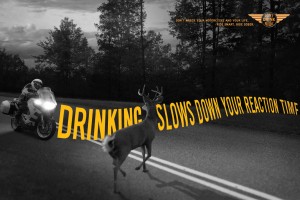 Recently, Consumer Reports published a great post for new motorcycle riders (and those that haven’t been on 2 wheels for a while). You can find the link to the post at the bottom of the page.
Recently, Consumer Reports published a great post for new motorcycle riders (and those that haven’t been on 2 wheels for a while). You can find the link to the post at the bottom of the page.
We’d thought we net some of the highlights of the article here. The full article is worth a read, however.
Key Motorcycling Stats (as published in the article):
- motorcyclists are 30 times more likely to die in a crash than people in a car (says the Insurance Institute for Highway Safety; and there are some other great stats here)
- riders over 60 years old are 3x more likely to be hospitalized after a crash than younger riders (though we guess this is similar for car drivers who are “over age”)
- speeding was a factor in forty-eight percent of fatalities in 2010 (also according to the Insurance Institute) where alcohol played a role in forty-two percent.
Tips (as published in the article):
Don’t buy more bike than you can handle
- Today’s small engines pack a punch vs. the old “two-strokers” (as my wife calls them). Old dudes beware.
- Get a bike that fits and that you can manage (i.e. get off the ground when you fall over).
- editor’s note: We have written some about “best bikes for beginners” so check out our stuff too.
Invest in anti-lock brakes.
- Don’t be too cool. Anti-lock brakes are a proven lifesaver and the Insurance Institute data show that bikes that had ABS brakes were 37 percent less likely to be involved in a fatal crash than bikes without it.
- Why? Not locking up your brakes when you grab a fistful of lever, helping you to maintain bike control.
Hone your skills.
- editor’s note: We LOVE this one. You can check out all our info on riding courses near you by going to the home page or our riding school section and finding your U.S. state or country.
- A Motorcycle Safety Foundation course or similar class will teach you the basic and advanced riding techniques, like evasive emergency maneuvers.
- An approved motorcycle safety course may make you eligible for an insurance discount
- You could get to skip the road test section of your licensing exam
Use your head
- editor’s note: We are 100% helmet believers and we make no excuses for this.
- Riders without a helmet are 40 percent more likely to suffer a fatal head injury in a crash and are 3x more likely to suffer brain injuries than those with helmets, according to government studies.
- Go full-face helmet (preferably SNELL approved); not cool halfsies or Colonel Klink. One great sign spotted in a gear shop once: “Buy a half-face helmet and get free jaw wire!”
Wear the right gear
- Want road-rash? Great. Ride in shorts, flip-flops and a backwards baseball cap.
- If not, get the right gear. Be safe. Go for leather or some type of reinforced synthetic (nylon, kevlar, etc.).
- Wear gloves. First thing to hit the pavement is often a hand.
- Protect your eyes. You’ll never ride again, for sure, if you can’t see.
Be defensive
- in collisions involving a motorcycle and a car, car drivers were at fault 60 percent of the time (per a study by the University of South Florida’s Center for Urban Transportation Research).
- This is where a riding school will help you learn to ride defensively; to plan ahead; to protect yourself from the “cages”.
Avoid bad weather and watch for road hazards (duh)
- Yes, it is possible to ride in bad conditions. check out our post here with super cool video.
- However, slippery conditions are a risk. Rain cuts your visibility and reduces the tire grip on the road. If you must ride in rain (or snow, yes, which can be done). Don’t go out right away. Let some rain wash the oil residue off the roads and go out 10-15 minutes after rain starts.
- “crap” on the road is a problem, be it sand, leaves or pebbles. These things can cause your bike to low side (slide out from under you). Be aware and be careful.
Link to original articleat: Consumer Reports
